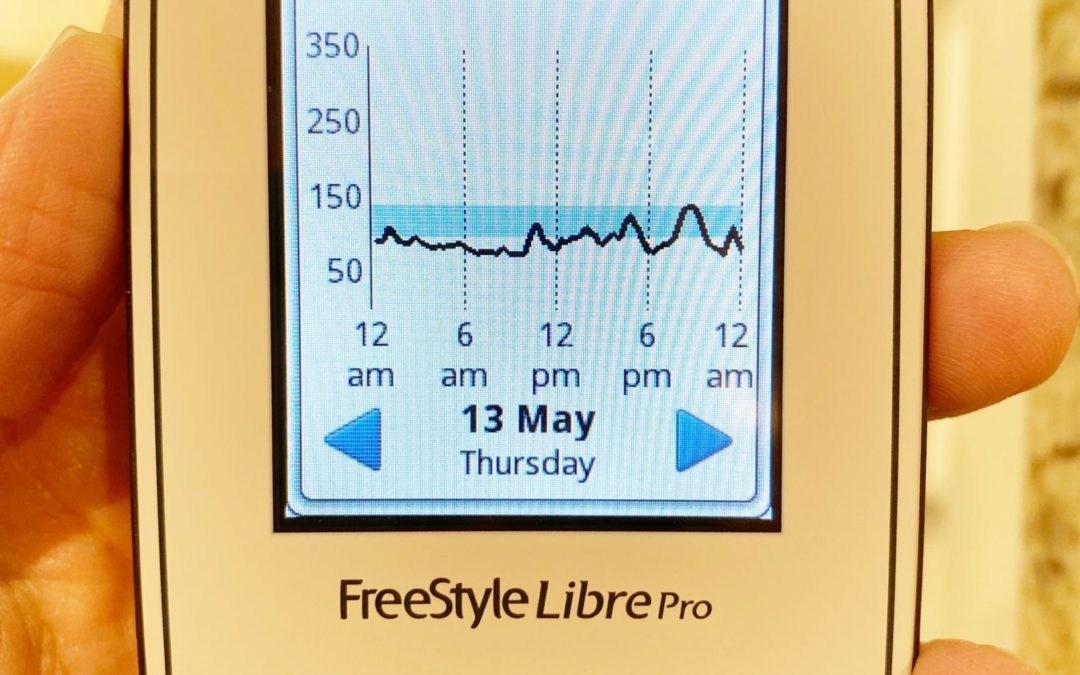At McDaniel Nutrition, we believe in personalized nutrition. But, before we can “personalize nutrition,” we must listen and aim to understand our clients. You’re unique. From everything to how you were fed as a child to how you feed yourself now – is unique to you. While the world or diet culture might tell you that you should “eat” a certain way, you and your body {with a little help from a dietitian} are best at determining that.
Recent research called the PREDICT study sheds light into how our unique blood sugar response to food and exercise impacts our health. Scientists refer to this blood sugar response as our “postprandial” response. These responses can vary hugely between individuals due to our unique gut bacteria. After eating, it’s normal (and healthy) for blood sugars and fat to rise and fall. But, excessive spikes and dips can overwhelm our bodies. Large roller coaster like responses can trigger inflammation, excess hunger and risk for chronic disease like diabetes and heart disease.
After learning that the general population could take part in this personalized nutrition PREDICT research, I decided to be a guinea pig. Part of the experimenting required wearing a blood sugar monitor for two weeks. (See picture below. This was from day 14, so my patch was falling off by this point.)
While my blood sugar responses to food might look different than yours, participation in this study shed valuable information that can be applied to all.

Here are a few of those lessons from my own personalized nutrition experience:
Personalized Nutrition Lesson 1: Moving after eating offers blood sugar benefits.
Below, you’ll see some screen shots from my blood sugar monitor. The first screen shot shows a blood sugar spike around 12 pm. (The clock wasn’t set correctly) This was my first meal of the day which was prescribed to be one cup of cooked rice.
Notice how high the spike goes and then drops? It’s a pretty big spike with a sharp drop.

Next, take a look at the second picture around 12 pm. In this scenario, I ate the same cup of rice, but then I went out for a 30-minute walk. As you can see, doing the exercise helped to “flatten” the curve a bit (quite a bit!).

Exercising after a meal that contains carbs can help the body better manage blood sugars. While we all don’t have the ability or (desire) to move after every meal, it does empower us to know that even a 10-minute walk or moving, such as cleaning up the house, after a meal offers us health benefits compared to sitting on the couch to watch a show.
Personalized Nutrition Lesson 2: Eating fat first.
If you happen to have a meal where you have the chance to eat your carbs last, it might benefit blood sugar control. In the first picture, I ate 1 cup cooked rice and 3 tablespoons of peanut butter at the same time. Notice the spike around 12 pm.

In the second picture, I ate the peanut butter first and then the rice 10 minutes later. You can barely see the spike! Amazing!

This approach would be easier to do with “compartmentalized meals.” For example, eating a dinner containing salmon, brown rice and vegetables compared to a mixed bowl of oats with nuts and berries. But, in meals such as the case of the sample dinner, eat the salmon first and rice last. This order of eating has the chance to improve how your body manages your blood sugars!
Personalized Nutrition Lesson 3: If you have dessert, don’t eat it alone.
By alone, I don’t mean without your friends. 🙂 When we eat carbohydrate-containing sweets on an empty stomach (say as a snack,) our blood sugars tend to rise higher and dip further. This can lead to you wanting more, feeling hungrier sooner and eating more later in the day. However, eating that dessert immediately after a meal tends to result in an overall flatter curve. Read more about this in MNT dietitian, Nikki’s post.
Do I have to wear a blood sugar monitor to get my own information?
No, if you pay attention, your body will give you this information. When you eat, take a few moments to notice:
How do I feel after eating that? Energy levels, mood, hunger/fullness
How long does that combination of food keep me feeling satisfied?
Our team of dietitians continues to read up on the research, and occasionally, we even do these fun experiments on ourselves! Evidence-based, personalized nutrition is what you deserve, so make sure that’s what you get from your team of health professionals . 🙂

